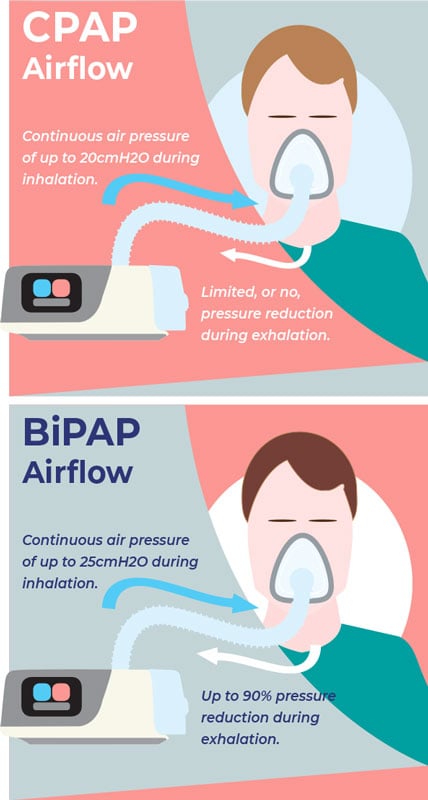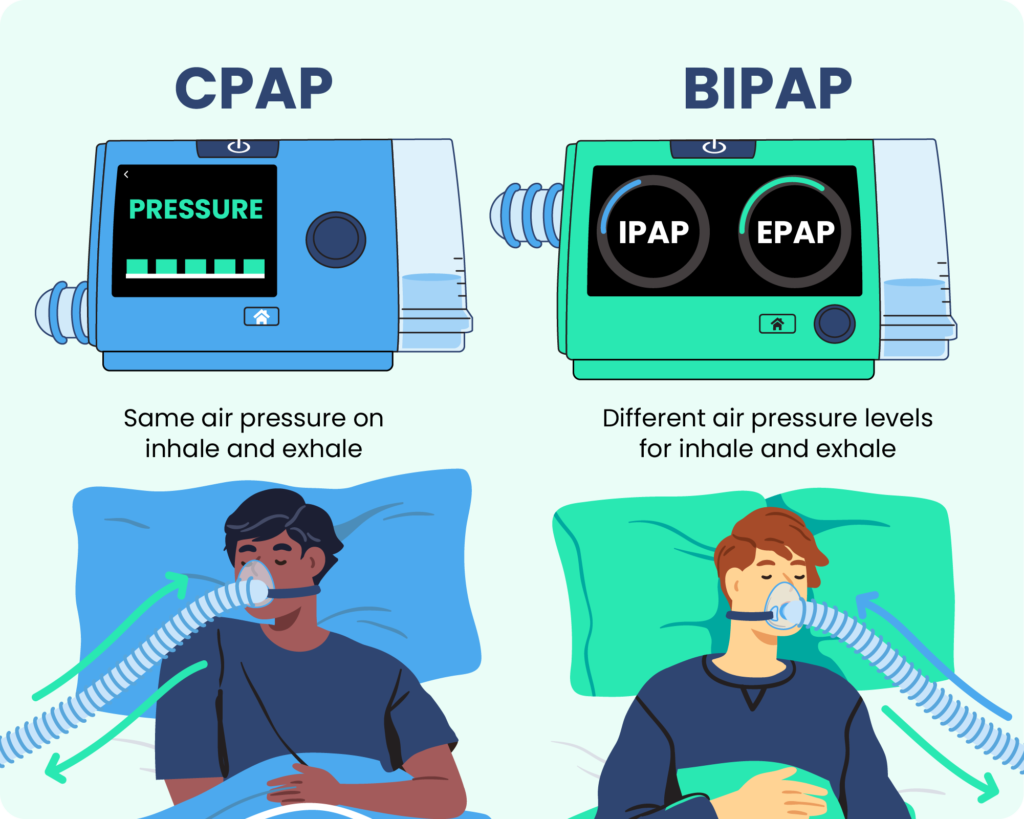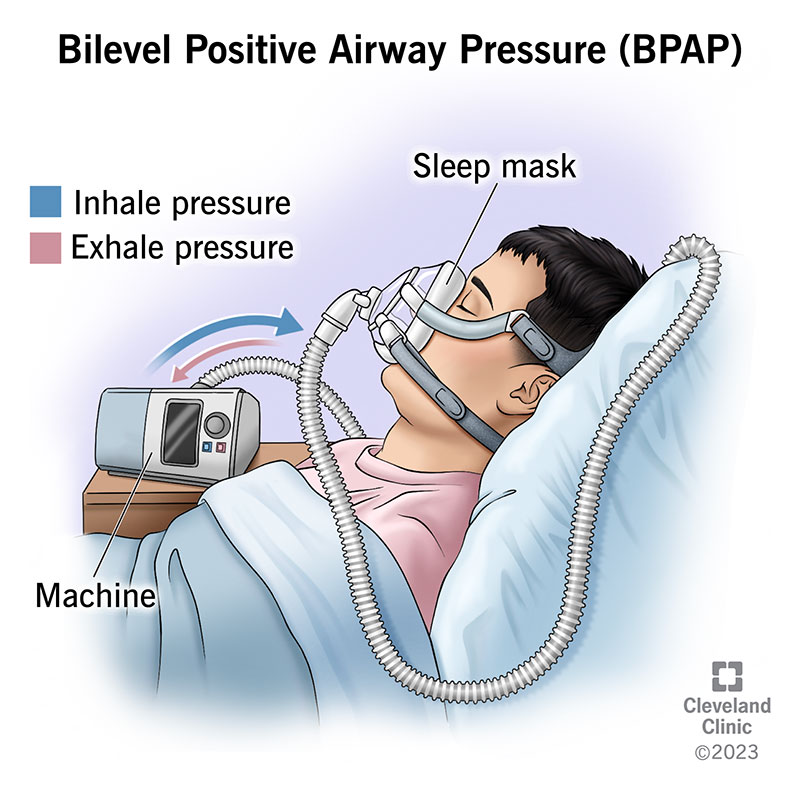Explore Flexible BiPAP Rental Alternatives for Home Treatment
Explore Flexible BiPAP Rental Alternatives for Home Treatment
Blog Article
Bipap vs. CPAP: Which Is the very best for Your Rest Problem?
When navigating the intricacies of rest problems, the choice between BiPAP and CPAP therapy is a crucial consideration. While CPAP provides a stable air movement appropriate for obstructive rest apnea, BiPAP's double stress setups may enhance convenience for those with even more intricate respiratory problems.
Understanding Rest Disorders
Rest conditions include a range of conditions that interfere with normal rest patterns, influencing both the top quality and period of rest. These conditions can manifest in numerous forms, including sleep problems, sleep apnea, narcolepsy, agitated leg disorder, and parasomnias. Each condition presents one-of-a-kind obstacles, commonly resulting in substantial daytime exhaustion, cognitive impairment, and emotional disturbances.
Insomnia is identified by problem dropping or staying asleep, while sleep apnea involves repeated interruptions in breathing throughout sleep, frequently resulting in fragmented remainder. Narcolepsy, on the various other hand, is marked by extreme daytime drowsiness and abrupt rest attacks. Restless leg disorder creates unpleasant feelings in the legs, motivating an unmanageable urge to move them, which can likewise hinder the capability to fall asleep.
The impact of rest conditions prolongs past private health and wellness, affecting total efficiency, relationships, and lifestyle. Comprehending the specific nature of each disorder is essential for reliable diagnosis and therapy. As sleep wellness ends up being progressively acknowledged as a crucial element of general wellness, resolving these problems is crucial for improving both rest quality and day-to-day performance.
How CPAP Functions
Constant Positive Air Passage Pressure (CPAP) therapy is often employed as a primary therapy for obstructive rest apnea (OSA) The mechanism of CPAP involves making use of a machine that supplies a stable stream of air with a mask put on during sleep. This air movement maintains favorable stress in the air passage, preventing the collapse or blockage of the throat that can occur during rest.
When a patient inhales, the CPAP machine offers a continuous flow of air, making certain that the airway continues to be open - BiPAP Rental. This not just relieves the symptoms of OSA, such as snoring and interrupted sleep patterns, yet also decreases the connected wellness risks, consisting of cardiovascular problems and daytime fatigue
The stress settings on a CPAP device can be personalized to fulfill individual person demands, typically determined through a sleep study. On the whole, CPAP therapy has actually been shown to considerably improve the top quality of rest and total health for individuals suffering from obstructive sleep apnea.
How BiPAP Works
BiPAP, or Bilevel Positive Airway Stress, is a specific kind of non-invasive ventilation that is particularly helpful for patients with conditions such as intricate sleep apnea or respiratory problems. Unlike CPAP, which supplies a continual stream of air at a solitary stress, BiPAP gives 2 unique pressure setups: a greater inspiratory pressure for inhalation and a lower expiratory pressure for exhalation. This dual-pressure technique enables simpler breathing, decreasing the effort required during exhalation.
The tool runs via a mask fitted over the nose or mouth, connected to a device that produces atmospheric pressure. When the individual breathes in, the equipment supplies the higher pressure to help with air flow, ensuring that the air passage continues to be open. Upon exhalation, the maker automatically decreases the pressure, making it much best site more comfy for the client to breathe out.

Secret Distinctions In Between BiPAP and CPAP

In contrast, BiPAP (Bilevel Favorable weblink Respiratory tract Pressure) provides 2 various stress setups: one for inhalation and a reduced one for exhalation. This twin stress system allows for more comfortable breathing, particularly for clients that fight with exhaling against a continual pressure. BiPAP is frequently suggested for people with complicated sleep apnea, persistent obstructive pulmonary illness (COPD), or those who require additional assistance throughout rest.
Additionally, the complexity of BiPAP devices normally results in a higher price and needs more careful titration than CPAP. BiPAP Rental. Understanding these crucial distinctions can help in identifying which gadget might be extra appropriate for certain sleep problems, setting the foundation for educated treatment choices
Picking the Right Therapy
The decision between BiPAP and CPAP therapy mainly hinges on the certain characteristics of the rest condition, the person's general health, and their comfort with the device. CPAP, which delivers a continual stream of air, is generally suggested for obstructive sleep apnea (OSA)
Conversely, BiPAP supplies 2 degrees of stress: one for inhalation and a reduced one for exhalation. This twin pressure system is valuable for patients with complex sleep apnea or those who experience trouble exhaling versus a continual stress. Furthermore, BiPAP is usually suggested for people with respiratory conditions, such as persistent obstructive pulmonary disease (COPD), where varying pressure settings can improve convenience and compliance.
Eventually, an extensive evaluation by a sleep professional, including a sleep research, can help determine which treatment lines up best with the patient's demands. Variables such as comfort, simplicity of usage, and certain sites clinical conditions ought to also be taken right into factor to consider to optimize therapy outcomes.
Conclusion
In summary, both BiPAP and CPAP serve distinct purposes in the management of rest conditions. CPAP works for obstructive sleep apnea with regular air movement, while BiPAP uses dual stress settings that improve convenience for those with complicated rest apnea or respiratory issues. The choice between these therapies need to be assisted by individual demands and problems, requiring a comprehensive assessment by a rest specialist to make sure optimal therapy results and improved top quality of rest.

On the whole, CPAP treatment has been shown to significantly improve the top quality of sleep and total health for people enduring from obstructive sleep apnea.
BiPAP is often recommended for clients with complicated rest apnea, chronic obstructive pulmonary illness (COPD), or those who require added assistance during rest.
CPAP is efficient for obstructive rest apnea through regular airflow, while BiPAP offers twin stress setups that boost comfort for those with intricate sleep apnea or respiratory concerns.
Report this page